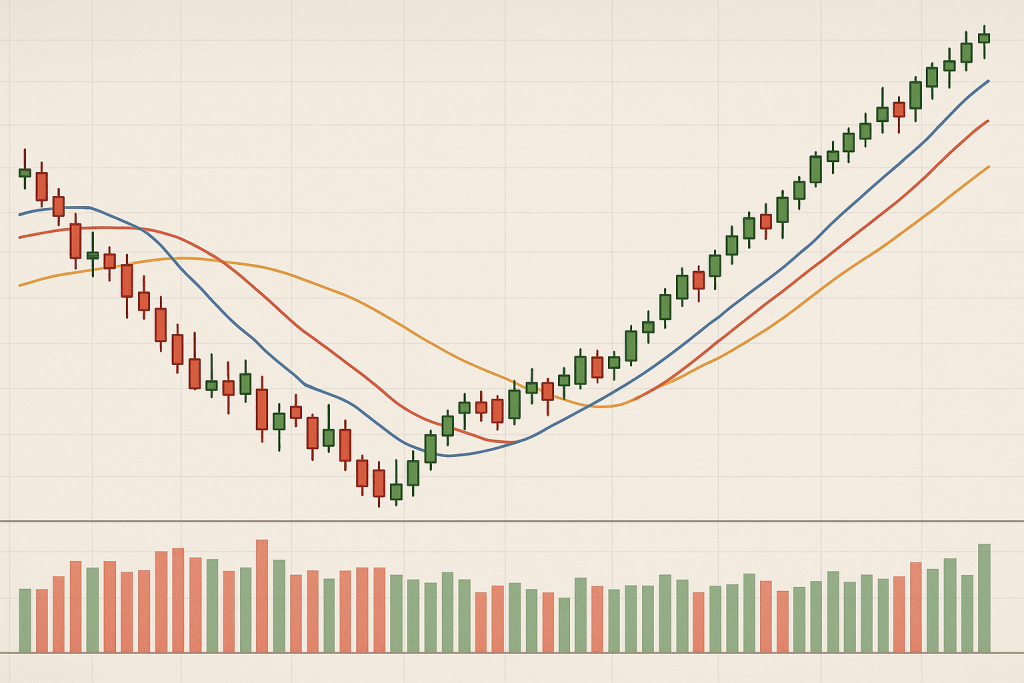Have you ever heard the phrase:
“The strongest horse keeps running”?
That’s the core idea of momentum investing—buying stocks that are already going up and selling when they start going down.
In simple terms:
- 📈 Ride the winners while they’re climbing
- 📉 Exit quickly when the trend breaks
🚀 Definition of Momentum Investing
Momentum investing is a trend-following strategy based on the belief that:
- Stocks that have been rising recently are likely to keep rising.
- Stocks that have been falling are likely to keep falling.
It focuses less on company fundamentals and more on price trends and market psychology.
📊 Example of Momentum Investing
Imagine Stock A:
- Up +30% in the last 3 months
- Trading volume is increasing
- Market sentiment is positive
👉 A momentum investor might say:
“Even though it’s already up, I’ll buy now because the trend is strong.”
🧠 Why It Works: Psychology & Statistics
Studies in psychology and finance show:
- Investors often chase winners.
- Short-term outperformers tend to keep outperforming—at least for a while.
This is why momentum investing has persisted as a successful strategy.
🟢 Pros of Momentum Investing
- 🎯 Focus on strong performers → Higher return potential
- ⚡ Quick gains if the trend continues
- 📊 Clear rules using technical analysis (moving averages, breakouts)
🔴 Cons of Momentum Investing
- 🎢 High risk if the trend suddenly reverses
- 💰 High costs due to frequent trading and taxes
- 😰 Emotional stress from constant decision-making
- 🎈 Bubbles → Risk of buying at the top
💡 Key Metrics for Momentum Investors
To succeed, momentum investors often look at:
- ✅ Performance: 3–12 month returns
- ✅ Volume: Rising prices with rising volume = strong signal
- ✅ Moving Averages: Breakouts above 50- or 200-day lines
- ✅ Diversification: Avoid betting everything on one “hot” stock
📈 Momentum ETFs
Don’t want to pick stocks yourself?
There are momentum ETFs that automatically select recent top performers:
- iShares MSCI USA Momentum Factor ETF (MTUM)
- Invesco Dorsey Wright Momentum ETF (PDP)
These funds apply the momentum strategy for you.

⚖️ Momentum vs. Value Investing
| Feature | Momentum Investing | Value Investing |
|---|---|---|
| Basis | Price trend, relative performance | Intrinsic value, fundamentals |
| Entry Point | While stock is rising | When undervalued |
| Time Horizon | Short to medium term | Long term |
| Strategy | Trend-following | Buy undervalued, hold patiently |
🎯 Key Takeaways
| Aspect | Momentum Investing |
|---|---|
| Definition | Trend-following: ride rising stocks |
| Philosophy | “What’s going up will keep going up” |
| Pros | Strong performers, fast gains possible |
| Cons | Risky reversals, frequent trading, stress |
🙌 Final Thoughts
Momentum investing can be exciting and profitable—but it’s not for everyone.
👉 Best suited for investors who:
- Enjoy charts and market trends
- Can react quickly to market shifts
- Have clear stop-loss rules
Without strict discipline, momentum can quickly turn from profit to loss.
If you prefer patience and fundamentals, value investing may fit better.
But if you thrive on speed, momentum investing might be your style.
📝 Disclaimer
This article is intended for educational purposes only. It does not constitute financial, investment, or legal advice. All investment decisions involve risks, and readers should conduct their own research or consult with a licensed financial advisor.
